In China, almost every city or town has its own old buddhist temples, which are very often the embodiment of the local arts, religion, culture and history. China lacks the gentry estates like the great houses of England and France. Buddhist temples are important monuments left over by our forefathers to the tangible civilization in China.
As the southern gate in China, Guangzhou has no exception with quite a few buddhist temples. There are four most influential buddhist monasteries in Guangzhou, namely Temple of Six Banyan Trees, Guangxiao Temple, Huanlin Temple and Haizhuan Temple. Plan your Guangzhou tour, don’t miss a short visit to the Temple of Six Banyan Trees.
The Temple of Six Banyan Trees was named in 1100 by the Su Dongpo, the great poet in Northern Dynasty (960 – 1127). The original temple goes back much earlier to 547 AD when it was built to enshrine Buddhist relics brought from India. The buddhist relics were placed under the pagoda in the temple. Both the temple buildings and the pagoda went through several partial renovations in each dynasties.
Every temple has more or less the same layout starting from the four heavenly kings hall and ending with the Hall of Sakyamuni ( Daxion Baodian ). What makes Temple of Six Banyan Trees unique is the Octogonal Pagoda inside the temple. It is nicknamed “Flower Pagoda” or” Hua Ta” in Chinese due to the colorful appearance.
How to get to Temple of Six Banyan Trees
Take subway line 1 and get off Gongyuanqian Station (公园前站)and walk along Zhongshan Road to the west direction and turn north to Liurongsi Road (Six Banyan Trees Road).
Add: No. 87, Liu Rong Road, Guangzhou Post Code: 510180
Now follow me to look at Temple of Six Banyan Trees. The Entrance to the Temple of Six Banyan Trees. “六榕” the two Chinese characters above the gate was written by Su Dongpo.
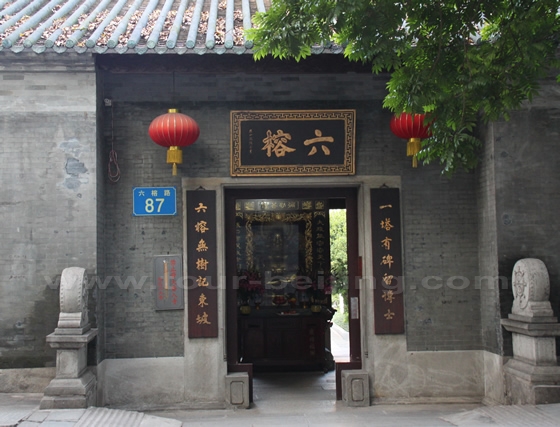
Behind the entrance is the Hall of Heavenly King. Sitting at the front is Maitreya Buddha and at theback is Vedda for worship.
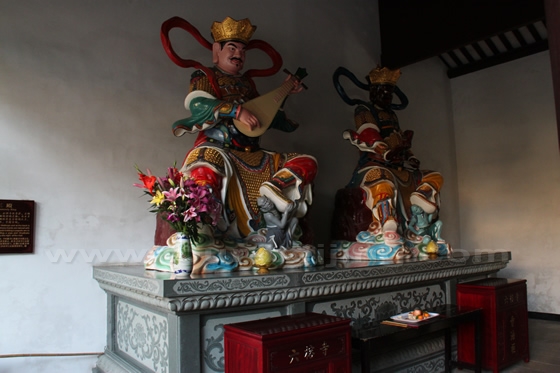
The pagoda is 57.6 m high, octagonal with outside 9 storeys and 17 inside storeys. It is also called a -one thousand buddha statues and 500 arhats statues.
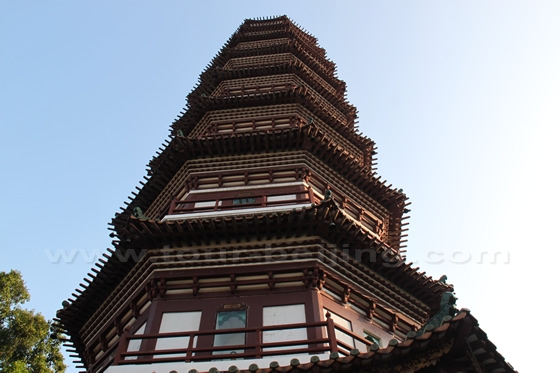
The Hall of Mahavira, 14m hight houses three copper statues – Sakyamuni, Amidabutsu and Maitreya
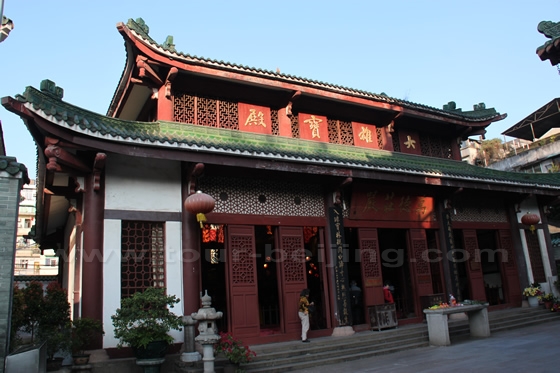
Pray for peaceful and fruitful life in the front of Hall of Mahavira
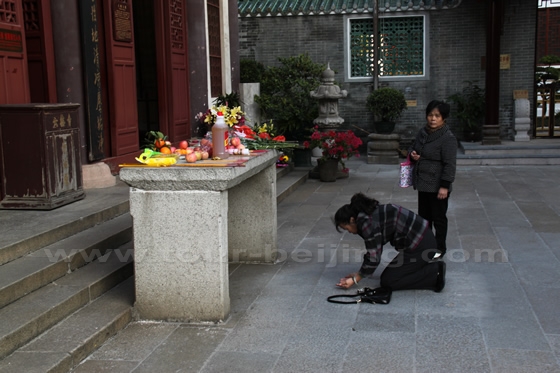
This is Avalokitdvara Hall (Guanyin Hall), 13m high, rebuilt in 1988. The hall enshrines two bronze statues of Guanyin.
Add on:
How to Visit Guangzhou in One Day
Any questions, just drop a line.





